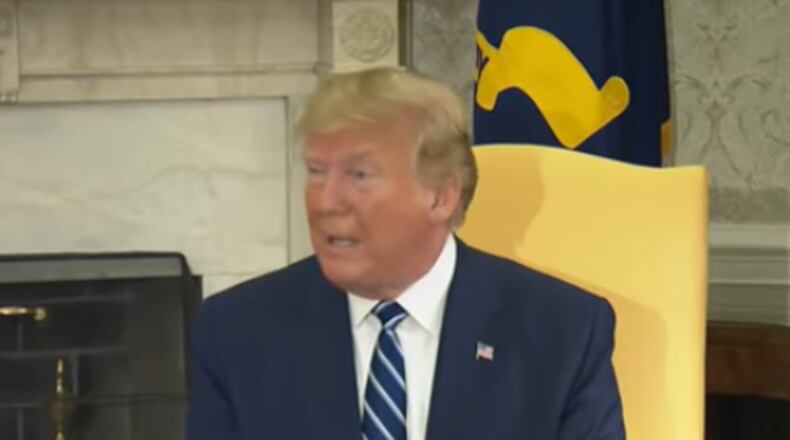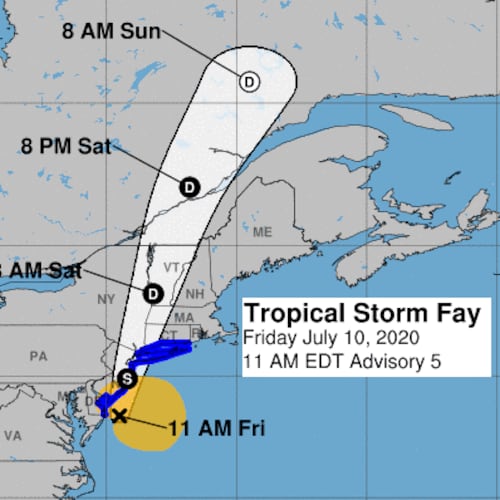With a new Acting Secretary of Defense taking charge at the Pentagon on Monday, the Trump Administration continues to feature a number of leaders in top federal agencies and departments of the Executive Branch who have been appointed on a temporary basis, many without ever being officially nominated to fill that position.
For President Donald Trump, that's not a bad thing.
"Acting gives you much greater flexibility. A lot easier to do things," the President told reporters last week when Acting Defense Secretary Patrick Shanahan withdrew as a possible nominee for the post Defense Secretary.
Some in Congress - in both parties - see it differently.
"When you have 'acting' after your name, you're not it," Sen. Jim Inhofe (R-OK) told reporters after the President notified him of Shanahan's departure.
"Every position at DHS (Department of Homeland Security) with responsibility for immigration or border security is now held by a temporary appointee," said Sen. Dick Durbin (D-IL).
Experts on the workings of government see the trend in 'Acting' officials in simple terms - it's a question of power.
"I argue that presidents strategically use their prerogative to immediately fill vacancies with unconfirmed "acting" officials, or leave them empty, to expand their executive power," said Christina Kinane of Yale University's Department of Political Science.
But the Federal Vacancies Reform Act puts a limit of 210 days on how long there can be 'acting' officials in some of these posts, though there are a variety of ways to circumvent that time frame.
Here are some examples from federal agencies and departments on what their leadership rosters look like:
1. The Department of Defense. With the departure of Acting Secretary of Defense Patrick Shanahan, President Trump announced his intent to nominate Army Secretary Mark Esper for the job of Secretary of Defense. While that nomination is not official as yet, two things should be noted: because of the laws governing how long someone can temporarily fill that job, Esper might only be able to serve as "Acting Secretary" until July 30. And if he is officially nominated for the post, someone else would have to take that "Acting" job during his confirmation process.
At the Pentagon, that's not the only top job with a temporary appointee. The number two slot of Deputy Secretary of Defense - that was Shanahan's old job - is being temporarily filled by the military's Comptroller David Norquist, who is "Performing the Duties of the Deputy Secretary of Defense." Like Esper, the President says he will nominate Norquist for that post, but it has not happened as yet. The number three job at the Pentagon is in the hands of Lisa Hershman, as the Acting Chief Management Officer. In terms of the service branches, there is an Acting Secretary of the Air Force, and with the Army Secretary moving up, there will soon be an Acting Secretary of the Army as well. In other words, much of the Pentagon leadership is in an "acting" mode at this point - and will be that way for months to come.
2. Department of Homeland Security. In terms of high-profile positions in the Trump Administration, DHS may be the most clear cut example of where temporary leaders are being used. The Acting Secretary is Kevin McAleenan, the former head of the Border Patrol. He's well respected, but has not been nominated for the DHS post. His top aide is a "Senior Official Performing the Duties of the Deputy Secretary." According to the DHS website, there are 13 senior officials working in an "Acting" capacity in the various agencies in DHS. There is an Acting head of FEMA. USCIS - the agency for legal immigration - is led by an Acting official who has not been nominated for the post. His top deputy is an Acting Deputy Director. The Border Patrol doesn't even have an 'Acting Director' but rather a "Senior Official Performing the Duties of the Commissioner." Immigration and Customs Enforcement has an "Acting" leader, who has not been nominated for the job.
3. Interior Department. Like the Department of Homeland Security, the Interior Department has a series of agencies with temporary leaders. For example, the Bureau of Land Management doesn't have an "Acting Director," but instead, the Principal Deputy Assistant Secretary of Land and Minerals Management, Casey Hammond, is "exercising the authority" of BLM Director. Under Hammond, there are six top slots in the BLM organizational chart which are listed as "Acting."
The National Park Service, like the BLM, does not have an "Acting Director," but rather a Deputy Director - Dan Smith - who is 'exercising the authority of the Director.' The Park Service has a number of acting officials in other top slots - Acting Deputy Director of Operations, Acting Chief of Staff, and five Acting Assistant Directors for various functions. The Acting Deputy Director, David Vela, was nominated by President Trump in 2018 for the job of Director at the Park Service, but the nomination was never voted on. President Trump has not sent the Senate a new nominee for the Park Service in 2019 as yet.
It's the same story at Fish and Wildlife Service. Like the BLM, there is no Acting Director of the Fish and Wildlife Service, but instead, Margaret Everson is the "Principal Deputy Director Exercising the Authority of the Director." No one has been nominated to head the agency.
4. In charge, but not nominated. There are plenty of examples in federal departments and agencies of officials being charge, with no nominee in the pipeline before the U.S. Senate, as it's not a question of delays on Capitol Hill for why a top official is not in a certain federal post. Norman Sharpless is the acting head of the Food and Drug Administration; there is no nominee for the position. OSHA - the Occupational Safety and Health Administration - has an Acting leader, Loren Sweatt, but no nominee for the post. One could rattle off many more "acting" officials in various Undersecretary, Assistant Secretary, and Deputy Secretary jobs in the federal government. How long can people serve in an "Acting" capacity? The Federal Vacancies Reform Act says 210 days - but there are a lot of ways that can be extended, or the clock can be reset.
5. Office of Personnel Management. This may be one of the most interesting situations where a federal agency has an acting leader. OPM is basically the Human Resources department for the federal government, and the temporary leader in charge is also serving as a top White House official, pressing a plan to entirely get rid of the department. Oddly enough, while the White House is trying to do away with OPM, President Trump nominated Dale Cabaniss to head the agency back in March.
About the Author
The Latest
Featured







